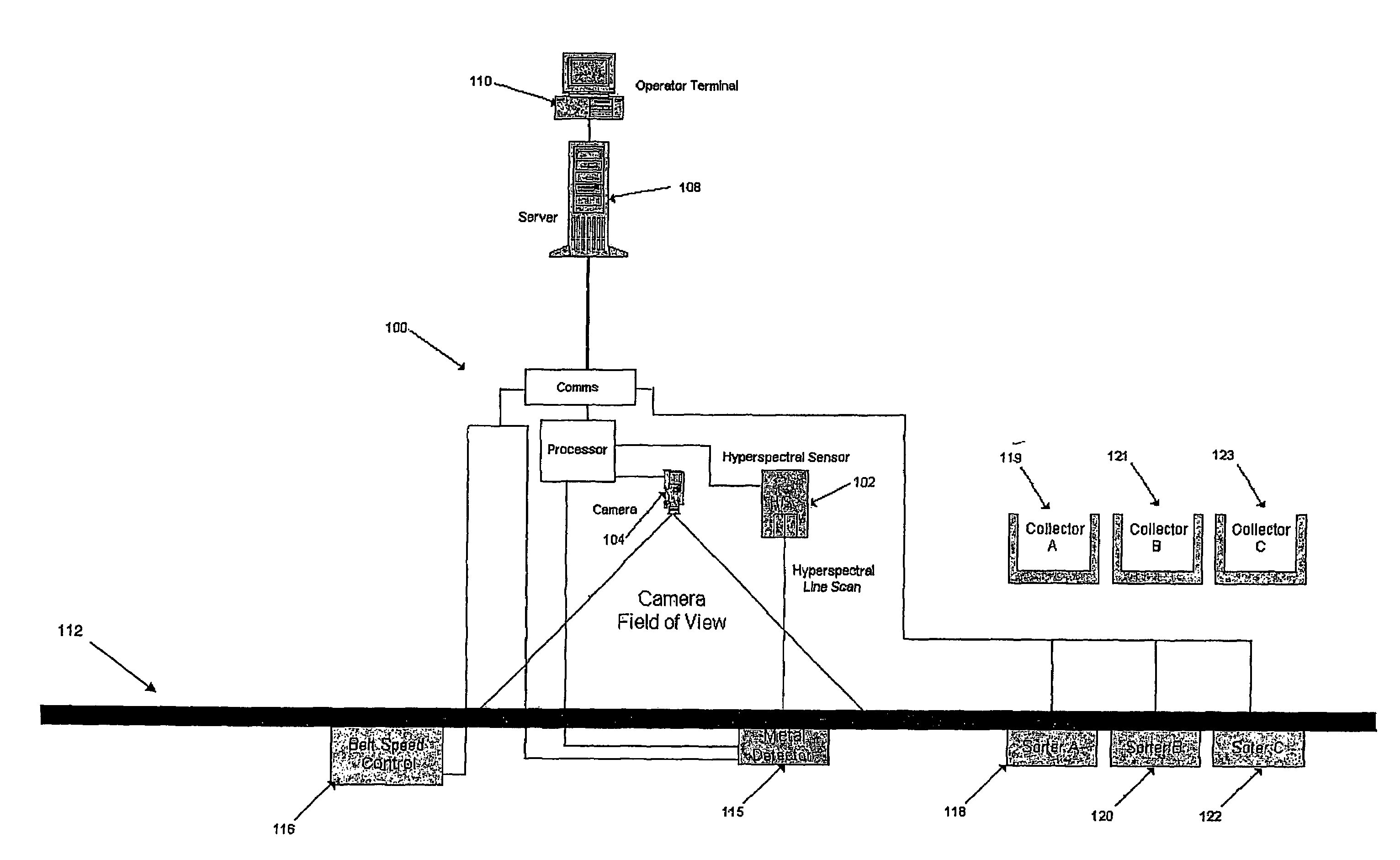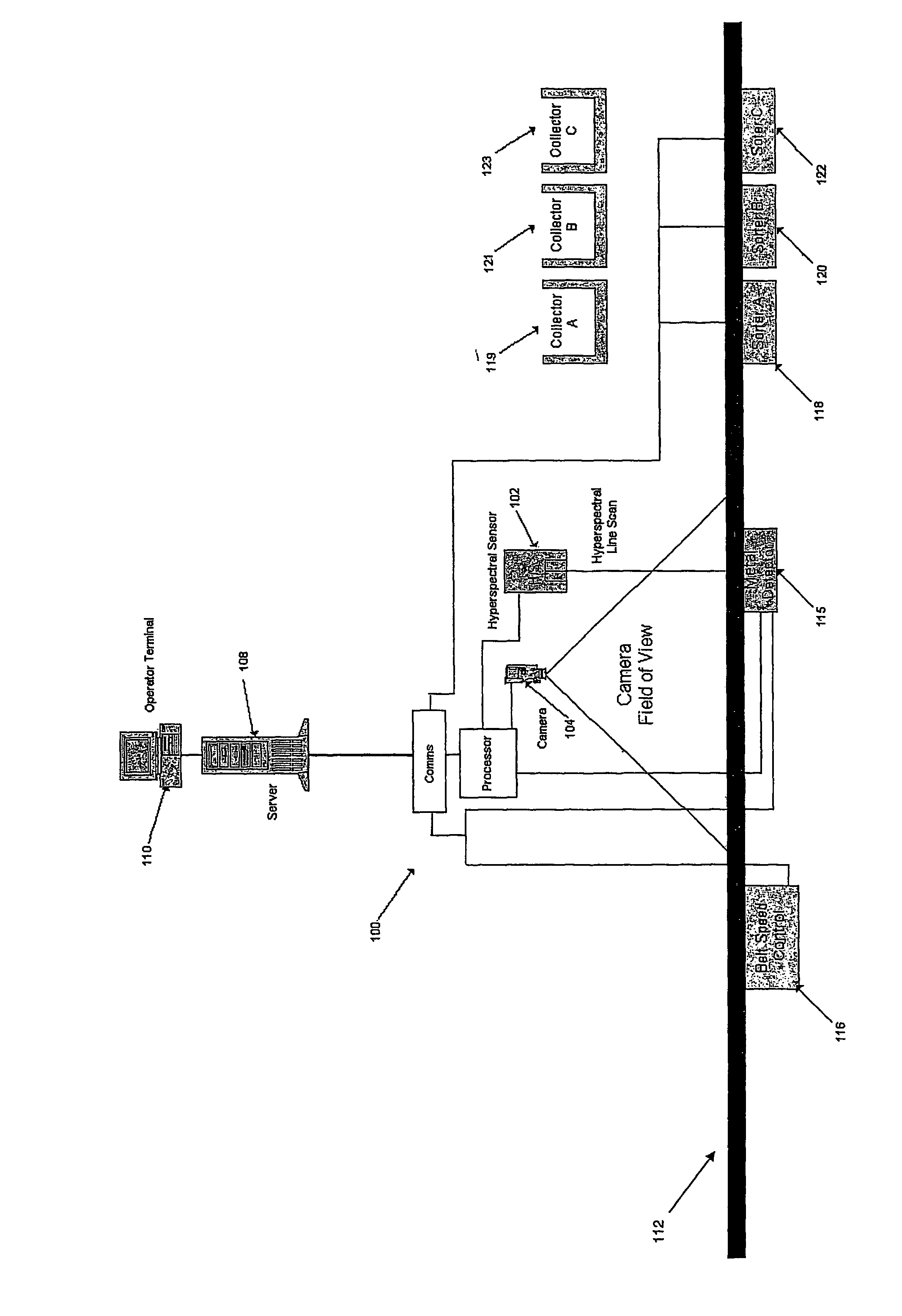Apparatus for, and method of, classifying objects in a waste stream
a technology of objects and waste streams, applied in the field of hyperspectral sensing and classification techniques, can solve the problems of only being able to sort different grades of the same material, unable to achieve the same material in different grades, and only being able to apply a wide range of materials, so as to achieve efficient reclamation of classified objects, improve reliability, and reduce the effect of detection efficiency
- Summary
- Abstract
- Description
- Claims
- Application Information
AI Technical Summary
Benefits of technology
Problems solved by technology
Method used
Image
Examples
Embodiment Construction
[0041]The system 100 is able to discriminate between different material types as well as identify different material classes in a mixed household waste stream, and eject objects of a pre-determined material-type for recycling. The system 100 comprises a hyperspectral camera 102, and conventional broadband camera, the output of which is connected to a processor 108. Monitoring and control of the system 100 is carried out by means of a computer 112 which is connected to the processor 108 and which has an operator terminal 110. The system 100 further comprises a conveyor belt 112, the speed of which is controlled by control unit 116, and ejection units 118, 120, 122 for ejecting objects from a waste stream on the conveyor belt 112 and passing them to corresponding receptacles 119, 121, 123. The ejection units 118,120, 122 may be based on known rejection systems such as flap gates or air separators. Further ejection units may be added as required depending on the number of material clas...
PUM
 Login to View More
Login to View More Abstract
Description
Claims
Application Information
 Login to View More
Login to View More - R&D
- Intellectual Property
- Life Sciences
- Materials
- Tech Scout
- Unparalleled Data Quality
- Higher Quality Content
- 60% Fewer Hallucinations
Browse by: Latest US Patents, China's latest patents, Technical Efficacy Thesaurus, Application Domain, Technology Topic, Popular Technical Reports.
© 2025 PatSnap. All rights reserved.Legal|Privacy policy|Modern Slavery Act Transparency Statement|Sitemap|About US| Contact US: help@patsnap.com


